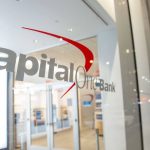High-yield bonds can offer a way for investors to earn higher returns if they’re comfortable taking on additional credit risk. Mutual funds and ETFs are some of the easiest ways to get exposure to high-yield bonds. Here’s what else you should know about high-yield bonds and some of the top funds to consider for your portfolio.
Top high-yield bond funds
*Yield data below from Morningstar as of April 22,2024.
Vanguard High-Yield Corporate Fund (VWEHX)
The Vanguard High-Yield Corporate Fund invests in medium and lower-quality corporate bonds. The fund managers invest in what they consider to be higher-rated junk bonds. The fund holds about 800 different bonds.
- Yield: 6.6 percent
- Expense ratio: 0.23 percent
- Fund assets: $23.9 billion
iShares iBoxx $ High Yield Corporate Bond ETF (HYG)
This iShares ETF is one of the most popular high-yield bond ETFs and aims to track the investment performance of an index made up of U.S. high-yield corporate bonds. The fund held about 1,200 bonds as of April 2024 with a weighted average maturity of about 4 years.
- Yield: 7.6 percent
- Expense ratio: 0.49 percent
- Fund assets: $14.5 billion
JPMorgan BetaBuilders USD High Yield Corporate Bond ETF (BBHY)
This JPMorgan ETF seeks to replicate the investment performance of an index of U.S. high-yield corporate bonds. The fund held more than 1,300 bonds as of April 2024.
- Yield: 7.9 percent
- Expense ratio: 0.15 percent
- Fund assets: $963.6 million
SPDR Portfolio High Yield Bond ETF (SPHY)
The SPDR Portfolio High Yield Bond ETF aims to closely match the investment performance of a high-yield bond index that includes U.S. high-yield bonds with at least one year to maturity and a minimum amount outstanding of $250 million, among other factors.
- Yield: 8.0 percent
- Expense ratio: 0.05 percent
- Fund assets: $4.1 billion
VanEck High Yield Muni ETF (HYD)
The VanEck High Yield Muni ETF seeks to match the investment performance of an index that tracks the U.S. high-yield long-term tax-exempt bond market. The bonds in this fund are generally exempt from federal income taxes, which is why the stated yield is lower than taxable funds.
- Yield: 4.4 percent
- Expense ratio: 0.32 percent
- Fund assets: $2.9 billion
*Note: To compare municipal bond funds with taxable funds, investors calculate a taxable equivalent yield, which can be determined by dividing the municipal yield by (1-tax rate).
What are high-yield bonds?
High-yield bonds are issued by entities with low credit ratings from bond rating agencies such as Moody’s, Standard & Poor’s and Fitch. Bonds with ratings below a certain threshold are considered non-investment grade, or high-yield. High-yield bonds are also referred to as junk bonds because of their lower credit quality, which means they’re more likely to default.
Because of the additional risk associated with high-yield bonds, investors also have the potential to earn higher returns compared to safer bonds. Yields for these non-investment-grade bonds are higher than government bonds, meaning investors can earn more in income relative to the price they paid for the bonds.
Keep in mind that high-yield bond investors may suffer during economic downturns or recessions as more issuers default because they can’t make their interest payments. Yields may widen, sending bond prices lower as investors look for additional return to compensate them for the higher risk. Because of their extra risks, high-yield bonds are not typically considered one of the best investments, though they may generate attractive returns.
Where can you buy high-yield bond funds?
High-yield bond funds can be bought at almost any online brokerage, but some brokers may have a wider offering. Bond ETFs will generally be available at any of the best online brokers. So, if you’re looking to invest in one, you’re likely to find what you’re looking for at a top broker.
But the situation differs for mutual funds. Since not all mutual funds are offered at all brokers, it can make sense to see if a potential broker offers the mutual fund you’re looking for. Start with the best brokers for mutual funds to see if it has access to the bond fund you want to buy.
Bottom line
High-yield bonds can be a way to boost your portfolio’s returns, but should only be included in an already diversified portfolio. While bonds are less volatile than stocks, high-yield bonds can behave more like stocks because of the additional risk they carry. You’ll want to make sure that the additional return available in high-yield bonds adequately compensates you for the higher risk compared to higher-rated bonds.
If you’re not sure if high-yield bond funds make sense for your portfolio, consider checking with a financial advisor who can help you assess your overall financial strategy.
Editorial Disclaimer: All investors are advised to conduct their own independent research into investment strategies before making an investment decision. In addition, investors are advised that past investment product performance is no guarantee of future price appreciation.
Read the full article here
















